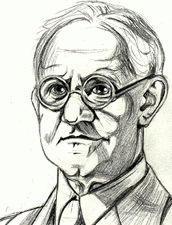George Eastman
Through a combination of research, experimentation, and entrepreneurship, George Eastman, born in 1854 in Waterville, New York, revolutionized photography and founded one of the world's best-known corporations.
In 1877, Eastman began work in photography. His specialty was preparing and applying the complex emulsions (liquid silver-salt coatings) used at that time in developing nearly all photographic plates. However, inspired by an article in a British almanac, Eastman dreamed of creating a "dry plate" developing process. Dry film would make the developing process incomparably simpler and could be contained within much smaller and lighter cameras. Within two years, Eastman had built a "Method and Apparatus for Coating Plates," (patent #226,503, granted in 1879) which made dry film a reality.
More innovations followed. In 1885, Eastman began marketing the world's first commercial film. Transparent and flexible, it could be cut into narrow strips and used while wound on a spindle. In 1888, Eastman introduced his "Kodak" to the market: a compact box camera with 100 exposures' worth of film, priced at $25. While improvements have been made since then, all non-digital handheld cameras used today evolved from that first Kodak.
Among his other innovations, George Eastman developed an improved film for Edison's motion-picture camera. Today, Eastman Kodak corporation (Kodak) continues to make photographic high technology accessible to the average person. But Eastman was also a great American philanthropist. Through various programs, he had given away over $100 million by the time of his death in 1932.


